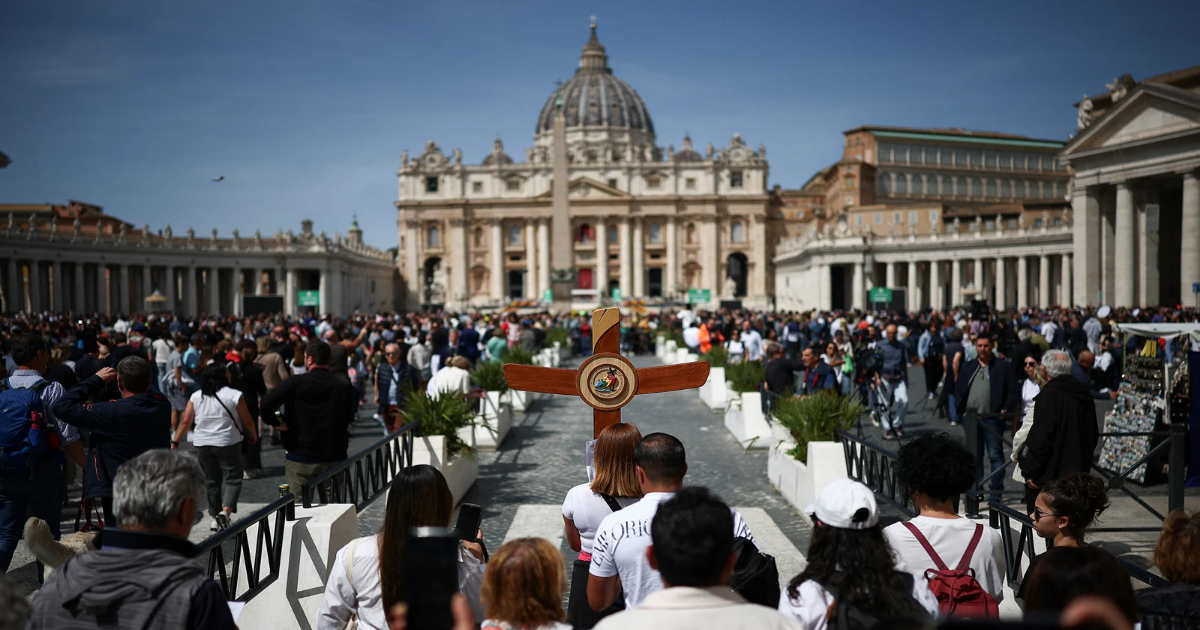The departure of Pope Francis is similar and yet different. It feels personal. He was not just the Pope; he was my kind of Pope — a reformist Pope, an inclusive Pope, a compassionate Pope, a football-loving Pope, a Pope from the Global South, a Pope who spoke common sense, including on Gaza and the fires raging in the Holy Land. These were qualities that made me — made us — want to identify with him. He was also the first Jesuit Pope, and I can’t fail to mention that I went to a Jesuit school.
One of the world’s largest religious communities has lost its leader. No, this is not an obituary. This is not an analysis of the significant contribution Pope Francis made to the world or the windows he opened in the Catholic Church. This is not about how he “led with mercy” or advocated for social reforms. This is not about his progressive outlook towards women and the LGBTQ community. This is about what Vatican City’s most famous resident meant to me — an Indian, born and raised in Kolkata.
The former archbishop of Buenos Aires belonged to the Jesuit order, a congregation of 15,000 members worldwide who run some of the most reputed educational institutions in India. They lead over 220 high schools and 52 university colleges throughout the country. Countless leaders have emerged from the Jesuits. When the Constitution of India was being framed, Father Jerome D’Souza was a member of the Constituent Assembly from 1946 to 1950, speaking up for the rights of the underprivileged, the minorities, the economically challenged. Earlier this year, this columnist had the good fortune of meeting the “Black Pope” (a term derived from the black cassocks or robes worn by the leader of the Jesuits, the largest male religious order in the Catholic Church). Reverend Dr Arturo Sosa, the global head of the Jesuits, addressed a programme commemorating the centenary of Loyola College, Chennai. Father Stan Swamy, who languished in state custody while being denied even a straw to drink water with, was also a Jesuit.
The last time a Pope visited India was in 1999, when Pope John Paul II landed in New Delhi. He had also visited Kolkata in February 1986. I was 25 then. His Holiness was met at the airport by Cardinal Lawrence Picachy. I remember the jostle and the hustle while trying to get a pavement view of the holy man, resplendent in white, standing ethereal-like in the glass-covered popemobile. His first official visit was to Mother Teresa’s Nirmal Hriday. Mother rushed to his popemobile and greeted him. Holding his hand, she led him into the home for the sick and dying, situated next to the Kalighat temple in south Kolkata. The first thing he would have seen when he entered the facility was a blackboard with the message written in chalk, “We do this for Jesus.” The Pope stayed there for an hour. Later that evening, he met with members of other Christian denominations and leaders of different faiths. He spent the night at Archbishop’s House on Park Street (now renamed Mother Teresa Sarani) and had breakfast in the refectory. Forty years on, even today, whenever we have breakfast in that room, we savour the moment, saying, “This is where a Pope ate breakfast!”
Story continues below this ad
The next evening, following a whirlwind trip to Shillong, his Holiness Pope John Paul II said mass at a venue best known for massive political rallies — Brigade Parade Ground. The soft-spoken pontiff’s sermon ended on a note of hope: “Let those who have no voice finally speak. Let India speak. Let Mother Teresa’s poor and all the poor of the world speak. Their voice is the voice of Christ. Amen.” Exactly 30 years later, in 2016, it was Pope Francis who led the celebration at St Peter’s Square in Vatican City where Mother Teresa was declared a saint — St Teresa of Kolkata. I remember every moment of that September morning in Europe, frame by frame.
most read
Cardinal Oswald Gracias of Mumbai, who had worked closely with the Pope since 2013, paid him a tribute earlier this week: “He began many projects even now for the Church to give priority… to allow all lay persons (non-clergy) also to have a role in the running and conducting of the church. What was particularly dear to him in recent times was the importance of giving women their rightful place in the church and in society.”
The Church leadership in India today, most significantly the bishops, must find inspiration and be guided by the blunt words of Pope Francis, who would always speak up: “The Church, while respecting the autonomy of political life, does not restrict her mission to the private sphere. The Church cannot and must not remain on the sidelines.” His mortal remains will be buried tomorrow. His words must give the Church strength across India and the world.
The writer is MP and leader, All India Trinamool Congress Parliamentary Party (Rajya Sabha)
